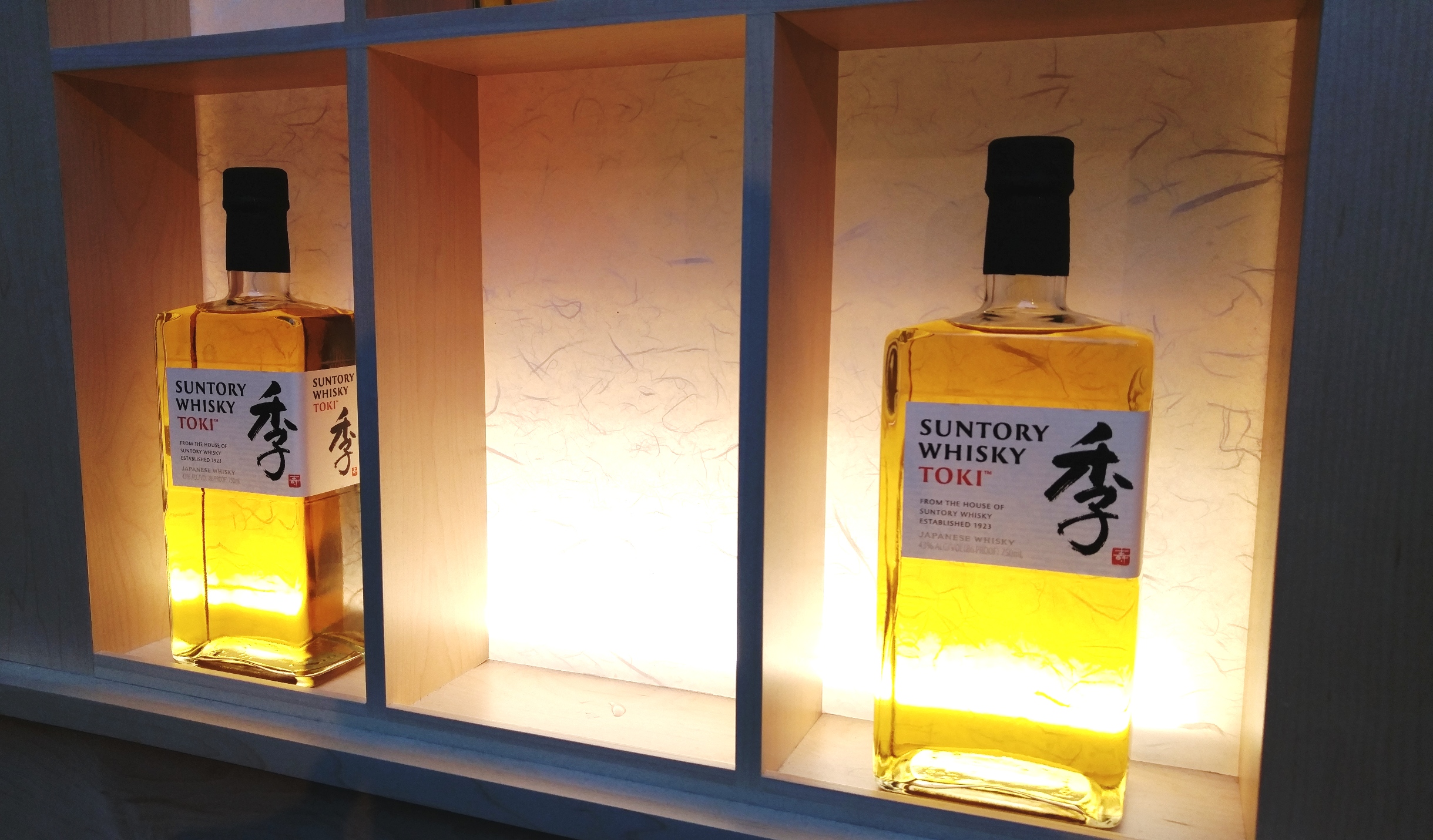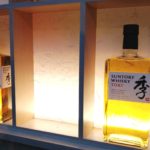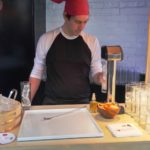The House of Suntory has unveiled a new blend for the North American market — Suntory Whisky Toki. The release party was held on June 7th at the 501 Union event space in Brooklyn, New York. Pork buns were passed, street performances were seen, and certainly, whisky was enjoyed in the Japanese street festival environment. Revelers were beckoned to take some time and enjoy the proceedings, as that’s what the blend is dedicated to, time, which is a loose translation of toki.
Suntory Whisky Toki Release Party Photos
“For as long as I’ve been involved in the whisky business, there’s been a cry for more Japanese whisky,” said Suntory brand ambassador Johnnie Mundell at the event. Yet, the whisky the market has been clamoring for — premium blends and older single malts — is both short on supply, and high on price. What the American market has lacked is therefore an accessible choice which still showcases the tenants of Japanese whisky.
“This has been five years in the making,” said Mundell. “We want people to experience a true Japanese whisky when they have Japanese whisky for the first time.”
In the mind of many western drinkers, whether rightfully or not, single malts are better than blends, period, whether the whisky is from Scotland or Japan. But that’s certainly not the approach that Suntory takes. Instead, they emphasize the craft of blending and how that elevates a whisky by bringing together many unique notes, role players and seasonings which round out its profile.
“In Japanese whisky, blending is superior because it shows mastery and complexity,” said Mundell.
Just as the vast bulk of the Scotch market is blended, and as a result, the world would have no single malt Scotch if those distilleries didn’t survive to fill blends, Mundell explains that Suntory has the same philosophy . “Yamazaki exists for Hibiki,” he said, the single malt serving the blend. He also calls the Hibiki brand family the “pinnacle” of everything Suntory produces.
The Prettier Official Bottle Shots:
(All credited to Suntory Whisky)
Close-up on Suntory Toki
Hibiki may be the pinnacle, and Toki an introductory rung, but the two aren’t wholly dissimilar. It comes back to the craft of the blend. Therefore, Mundell emphasizes the importance of, “understanding how Hibiki and Toki are the same, but yet, different,” each working with a range of Suntory-distilled whiskies to achieve a desired and balanced end result.
To appreciate the whole by examining the parts, while also showcasing the art of blending, Mundell led a tasting of Suntory Toki along with three of its varied component ingredients. Whiskies from all three Suntory distilleries were on display:
- Hakushu-distilled whisky aged in American oak, lightly peated, with tropical fruit and green apple.
- Chita-distilled grain “heavy type” grain whisky, distilled on a 2-column rig with a corn and barley mash bill, heavier on the barley than some of their other grain components. This offered toffee on the nose, with an oily, velvety mouthfeel, and a spicier palate.
- Yamazaki-distilled whisky aged in Spanish oak, showcasing nutty and spicy notes.
When blended together along with other components — there’s at least one other Yamazaki whisky in the blend, and the brand doesn’t disclose exact percentages of inclusion — Suntory Toki is the result.
The whisky is quite light, floral and fragrant. The dominant player certainly seems to be the fruity Hakushu, with soft fruits coming through early on the nose and palate. The Chita grain makes an appearance towards the back palate and finish, with spicier notes and light vanillins.
Note: Later in an official press release, Suntory did in fact reveal that Chief Blender Shinji Fukuyo chose the Hakushu whisky as the bulk of the blend, and the Chita heavy-type as the second largest component. Both selections buck tradition for Suntory, which typically has Yamazaki as the heart of its blends.
Suntory Toki stands up on its own accord, and certainly works well over a big hunk of ice. But it’s a blend designed to be deployed by bartenders.
For one, it’s a Japanese whisky with an affordable enough price tag that it can actually be mixed. An excellent cocktail was offered at the event, the Toki-O, with yuzu citrus, orange juice, cardamom bitters, cardamom agave and a sprinkling of cardamom dust, and shiso leaf.
Additionally though, Toki is meant to be drank in the way that the Japanese drink their whiskies — in the highball. The light, floral whisky goes down easily in this effervescent, refreshing format, without being lost entirely to it.
One potential challenge for the brand is that beyond the dedicated whisky geek, not all American drinkers are familiar with the Suntory name, even if they have been enjoying the house’s whiskies. A whisky drinker might recognize Yamazaki or Hibiki, but this is the first offering available in the U.S. market actually billed as Suntory. “We recognize it as a challenge,” said Mundell.
Any confusion over the name might take a moment to overcome, but once a few cocktails or highballs are enjoyed, consumers won’t be forgetting Suntory anytime soon.
Suntory Toki, bottled at 43% ABV, is available now at a suggested price of $40. Potential expansion to the global market remains possible for next year.












